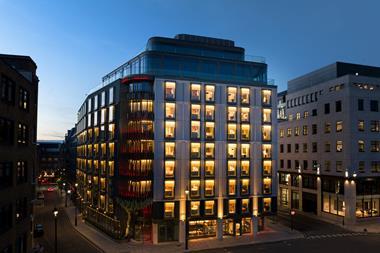Munich recorded the highest office take-up in Germany over the first six months of 2011, boosting take-up in the five biggest markets (Berlin, Dusseldorf, Frankfurt, Hamburg and Munich) by 13.7% compared with 2010 levels, according to new research from property adviser Savills.
Munich recorded the highest office take-up in Germany over the first six months of 2011, boosting take-up in the five biggest markets (Berlin, Dusseldorf, Frankfurt, Hamburg and Munich) by 13.7% compared with 2010 levels, according to new research from property adviser Savills.
Take-up in Munich increased by 44% year-on-year, followed by Hamburg (+21%), Berlin (+18%) and Frankfurt (+6%). Düsseldorf was the only ‘big five’ market to see a decline (-29%) compared to the previous year. However, this result was primarily due to the Vodafone letting of last year, Savills said.
Combined take-up in the five biggest office markets totalled over 717,000 m2 in Q2, exceeding Q1 by 12.5% and bringing the H1 figure to 1.36 million m2.
Robert Kellershohn, managing director office agency at Savills, said: ‘The German office markets gained further momentum in Q2 2011. We are seeing significant increasing demand for office space across the board.’
The increased demand is reflected in rental levels, which remained largely stable in four of the five markets, Savills said.
Düsseldorf even saw average rents rise by around 10% in Q2 compared to the previous quarter. Prime rents, which in many places stood close to their five-year average, likewise remained unchanged in most of the markets. Hamburg was an exception, recording a slight decline from EUR 23.90/m2 per month in the previous quarter to EUR 23.00 m2 per month at the end of H1. In Munich prime rents increased by just below 4% to EUR 30.30 m2 per month, passing the EUR 30 mark for the first time since the end of 2009.
The average vacancy rate in the five markets fell from 10.6% in Q1 to 10.4% in Q2. Given the positive economic outlook, Savills predicts take-up levels will continue to be positive with a total 2.5 million m2 likely to be exceeded.









